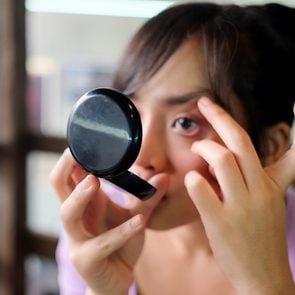In theory, the ability to remotely start your car without leaving your home by pressing a few buttons on your key fob seems like a win-win proposition. But like many things that seem too good to be true, remote starters are not without their detractors.
There are a few negative perceptions around the idea of starting a car remotely, with some people believing it puts unnecessary strain on engines and others saying it can prematurely drain batteries. But is any of that actually true? And if so, do the harmful effects outweigh the convenience offered by remote starters?
Are Remote Starters Bad for a Vehicle’s Engine?
There are two schools of thought on whether remote starting can damage an engine. The main difference boils down to whether you believe you should run your car for a short period before driving it in the winter.
In cold climates with long winter months, letting a vehicle warm up sounds like a good strategy for driver comfort and vehicle performance. But some automotive experts believe that pre-heating your car does more harm than good and can actually wear down an engine over time.
“In general, using a remote start to warm your car up in cold weather can bring unnecessary wear on your engine,” said Jake McKenzie of Auto Accessories Garage. “Your engine works its hardest when the weather is cold, and nothing will warm it up more efficiently than driving it. When you remote-start your vehicle while you’re still getting ready for work, you greatly prolong the warm-up period. And over time, all of this unnecessary strain on your engine can be damaging.” (Check out more surprising ways you’re shortening the life of your car.)
Other automative professionals are less convinced.
“Even though there might be a stigma around remote car starters, there’s no hard data to support such claims,” said Bryan Rodgers, owner of Rodgers Performance. “People may argue that consistently pre-heating your car can put a certain amount of added wear and tear on your engine. But in reality, it actually allows your engine’s oil to heat up, allowing your vehicle to run smoother—limiting the strain on your engine.”
Ultimately, it’s important to note that neither of these arguments are for or against remote car starters. The concern over engine wear—regardless of whether or not that concern is warranted—stems from a debate over starting your car in general, not of how you start your car.
If you believe that running your car in the winter before you drive is bad for the engine, don’t do it. But if you like preheating your car, there’s truly no difference—at least to the engine—between getting in and turning the key and doing the same thing remotely.
Are Remote Starters Bad for a Vehicle’s Battery?
The other knock on remote car starters is that they can damage a vehicle’s battery. This seems to be based on urban myths and bad science. Starting a car is starting a car, and the process of engine ignition doesn’t change when you do it remotely.
There is one instance, however, where a remote starter could needlessly tax your battery. If your car did not come with a remote starter and you want to install an aftermarket model, improper installation could lead to issues with your battery and electrical systems.
“Factory installed starters should not be a problem,” said Lauren Fix of CarCoachReports.com. “Aftermarket starters needs to be installed professionally. If there are not installed properly it’s easy to ground out one of the wires and drain your battery prematurely. [The starter] also needs to have a safety switch so that there’s no damage to the electrical system.”
How hard is it to install an aftermarket starter? “It’s a simple as following the directions if you have electrical experience,” Fix said. “If you don’t, have a professional install it.”
Next, discover the genius hack that keeps your car windows from fogging up.
I drove my first car in the early 1950s, when an automatic transmission was something fancied only by lady drivers (of whom I knew very few) and the very rich (of whom I knew none). Seat belts were nonexistent, door buzzers were unheard of and the word “digital” had not yet entered our vocabulary.
Back then, most people could barely afford to own a second-hand car—a term used to describe anything from a two-year-old convertible inherited from your Aunt Bessie to a badly scarred teenaged model waiting for its next accident.
Mine was a recently acquired 1938 sedan, complete with split windshield, undetermined mileage, patched upholstery, a brand-new, brushed-on paint job and great spirit. One day, my wife and I decided to go on a weekend trip. We packed the trunk and piled the back seat with suitcases, packages, laid-out dresses and a cold lunch. But when I turned the key, nothing happened. No sound, no clicking, no engine growl. And when I tried it, no horn. I would have tried the radio, too, but we had no radio.
“Oh no, my battery has died,” I groaned.

Battery jumper cables had no doubt been invented, but they were unknown to me and to anyone I knew. The popular method to start a car with a dead battery was to push it.
My neighbour, seeing my predicament, came over willingly to help—something you did in those days. We pushed my car onto the road and he positioned his station wagon behind it.
There is a ritual to be followed when your car is being push-started. At the time I was unfamiliar with it, but my neighbour’s instructions were clear: “Leave your window open, turn on your ignition, put your gearshift lever in third, put your foot on the gas and steer straight.” Then he added, with what I thought was a sadistic grin, “Hang on, I’m going to gun you good.”
I did as I was told, gripped the steering wheel in the approved “ten and two” fashion and grimly focused my attention on the road. Except for a few parked cars, the way ahead was clear. Several people stopped their front yard chores and looked expectantly in my direction, waiting for a calamity.
Suddenly, I felt a grating nudge at the rear—bumpers were for bumping back then—and we were moving. Slowly at first, then faster. Because my rear vision was blocked by the suitcases, I could not see my neighbour’s car behind me. But there was no mistaking the surge of power driving me forward. We narrowly missed the first parked vehicle, then swerved towards the second. “You fool,” I muttered, “you’re going to shove me straight into that car.”
My desperate last-second wrenching of the steering wheel averted a disaster, but a high-pitched shriek of scraping metal told me that the success was not entirely complete. The more we accelerated, the more I became unhinged. “The idiot, why is he pushing me so hard?”
The wind whistled, the car creaked—and what was that roaring noise in my ears? “Slow down, you moron, you’ll get us both killed!”
I had visions of smashing through the storefront window of Rupert’s Country Hardware and ending up in the plumbing department, amid busted toilet bowls and scattered customers. In desperation, I aimed for the gate to Farmer Brown’s field and ducked instinctively as the wood splintered and flew in all directions when the car crashed through it. Beyond the gate was a shallow pool, mostly mud. The car skidded and slithered to a stop as the spinning wheels slipped and sank into the muck. I sat there, shaking for several minutes, with my hands still clenched tightly on the steering wheel. When I finally managed to let go, the roaring noise in my ears remained… Until I removed my foot from the gas pedal and the motor slowed to a rough idle.
Next, read the incredible story of how one man missed out on his dream car as a teenager, then found it parked in his driveway 25 years later.
When I was in elementary school, the nuns told us, “If you don’t have anything nice to say, don’t say anything.”
Alice Roosevelt Longworth, President Theodore Roosevelt’s daughter and a famous gossip, took the opposite view. She kept a pillow on her sofa, needlepointed with her still-popular motto, “If you can’t say something good about someone, sit right here by me.”
People who study gossip define it as any talk about people who are not present. It can be positive, neutral or negative, but it’s the mean-spirited variety—Alice Longworth’s favourite—that has traditionally inspired disapproval. For many of us, hearing and telling scandalous stories counts as a guilty pleasure.
And yet, gossip is by no means a black-and-white affair. We have a natural need for human connection, and gossip feeds that, for good and ill. Much depends on the motivation of the gossiper: are they aiming to warn people about a bad actor, or are they enjoying the malicious pleasure of spreading a harmful story? It comes down to curbing the mean variety while benefiting from the useful.
Why We Gossip
The reasons why people indulge in gossip or shun it are as individual as they are. In 20 years of friendship, I have never heard Lyndsay Green, a Victoria, B.C. sociologist and author, dish the dirt about anyone. When I asked her why she never gossips, she traced her behaviour back to her school days—and her own sense of security.
“People telling hurtful secrets seem vulnerable,” she says. “They use gossip like a chip in gambling: ‘I’m going to throw this in, and I hope you will like me more.’” It’s a tactic that might work to gain connection in the short-term, Green surmises, but even as a kid, she doubted that it built true friendship.
Still, it’s a tempting habit—and many people can attest that there’s something undeniably seductive about being the bearer of scandalous news. For better or worse, a feeling of superiority can accompany having a juicy—and exclusive—piece of news to share. Dishing the dirt can feel fun, and it can also bring us together, tightening social bonds. The trick is learning the difference between the benign and the bad.
Some Gossip is Good
Despite its bad name, the past few decades have seen an appreciation of gossip. Psychologists, sociologists and experts in organizational behaviour write that even snarkier gossip can be a powerful aid in bonding and social education. Criticizing those who have transgressed social norms, for example, encourages good conduct and serves as a deterrent to bad behaviour.
Scholars also hypothesize that the informational value of gossip was important for our ancestors: those who knew what was going on in the next cave were likelier to survive than more isolated individuals. While it’s not a life-and-death matter today, gossip’s informational function remains useful. Your colleagues’ speculation about the company’s change in leadership can keep employees in the loop. The same goes for potential developments in your community or neighbourhood.
Studies have also shown that gossip can alleviate loneliness, serve as a safety valve for frustration and stimulate the part of our brains that helps us deal with complicated relationships. It even calms down our bodies when it’s used to help others, says Matthew Feinberg, a professor of organizational behaviour at the University of Toronto’s Rotman School of Management. In one study, his subjects observed people cheating at a game. When they simply watched, their heart rates sped up, indicating their desire to tell the other players about the rule-breaking. When they were able to warn others, their heart rates returned to normal.

When It Comes to Gossip, Motive Matters
Is your objective to be empathetic, compassionate or appreciative? Or is it something intended to wound or, as Green recognized, to increase your status? John Fraser, a journalist and author, relishes and values gossip. Fraser’s gossiping ticks some familiar boxes: he uses it to bond with people, to inform, to humiliate those he thinks deserve scorn and to celebrate “the human circus.”
“Only in rare circumstances do I believe in secrets,” he says. He likes “sharing stuff,” which includes others’ secrets, as well as his own. While Lisa Schmidt, a Montreal life coach and consultant, believes secrets should be respected, she agrees with Fraser on a key point: “Informational gossip greases the skids of the world.”
If permission is given, sharing sensitive information may provide an opportunity for compassion. Say you learn that two friends are divorcing. Passing on the information may spare them the emotional exhaustion of telling everyone themselves. The listener may also respond by reaching out in kindness to one or both members of the couple to assure them of support.
Find out more habits of highly compassionate people.
How to Stop Gossiping
Delicious as it can be to share gossip, the malicious kind can—and often should—leave a bad taste in your mouth. Pay attention to your conversation. How much of it is sneering or embroidering a discreditable story to make it even more shameful? Are you knowingly passing on information that is incomplete or incorrect?
Schmidt asks her clients, “Who do you want to be in the world?” If she notices a client disparaging others, she’ll hold a mirror up to the behaviour and say, “This is the language you’re using. Does that align with the person of integrity you say you want to be?”
Also, try to analyze yourself as a listener. When people regularly come to you with sniping gossip and you allow it, you’re creating a culture that feeds on meanness. You may simply say that you don’t want to engage in that kind of talk. But even a more subtle response works. I had a friend who, whenever I bad-mouthed someone, reminded me what was good about that person or about the difficulties in their life. Without ever commenting directly, she taught me that my gossiping was not going to be reciprocated. So I stopped.
Schmidt acknowledges that we won’t always get it right. But if we keep pulling ourselves back to the person we want to be, it will get easier to chat about people in ways that are still fun, but never cruel.
Now that you know how to stop gossiping, find out how to share a secret that’s been weighing heavily on your shoulders.
It happens to the best of us. You (or a well-intended family member) unknowingly toss your favourite sweater, pair of jeans, or dress in the dryer on high heat, and it comes out a few sizes too small, too short, or totally misshapen.
However, before you donate the shrunken clothing item to your child’s doll, there might be a chance you can undo some of the damage. Even though you might not be able to totally unshrink your clothes, there are steps you can take to stretch or loosen the fabric.
Mary Gagliardi, aka “Dr. Laundry,” Clorox‘s in-house scientist and cleaning expert, gives us the rundown on how to unshrink clothes.
Why do clothes shrink?
Provided you follow the instructions on the laundry care tag, a high-quality garment or fabric should have the ability to maintain its original shape and good dimensional stability, meaning you should be able to wash and dry it without its size being affected. However, there are a variety of reasons why a product might shrink.
Fibre type is the main reason why a clothing item shrinks, according to Gagliardi. Natural fabrics, such as cotton and linen are more likely to shrink because of their moisture absorption properties, she explains. Natural animal hair fibres—think wool and cashmere—also absorb moisture, but they also “felt,” a permanent interlocking of fibres that make a clothing item appear smaller, once wet which can be mistaken for shrinking. (Use these 13 expert laundry tips to keep your clothes cleaner.)
Other reasons why clothing might shrink has to do with how much tension a yarn is under when the fabric is woven or knitted or while it is being processed, and the overall quality of the clothing. In general, higher-quality manufacturers use special finishes and production techniques to prevent shrinkage.
How can you prevent shrinking in the first place?
With cotton items, lowering the wash temperature and air drying will help prevent a garment from shrinking. Blue jeans and other heavier sturdier fabrics can be hung by the hems on pants hangers to line dry. The weight of the damp fabric will naturally lengthen the legs as the jeans air dry. Less sturdy lightweight fabrics should lay flat to dry because wet fabric is heavier than dry fabric, and shoulder seams can rip out or stretch if hung to dry.
How can you unshrink clothes?
Once the damage is done, follow these steps to unshrink clothes.
- Fill a sink or tub with lukewarm water and add a capful of baby shampoo, hair conditioner, or laundry soap formulated for delicate cycles.
- Soak for up to 30 minutes to loosen fibres.
- Remove the item of clothing from the water and gently squeeze the water from the clothing, but do not rinse it out.
- Lay the clothing on a flat towel and roll it up, gently squeezing it until the item is damp and not wet.
- Lay the clothing item on another dry flat towel, gently stretching it back to preshrunk size.
- Allow the item to air dry.
Other tips for unshrinking clothes
Gagliardi suggests a few other strategies when it comes to unshrinking special fabrics and clothing items:
Cotton sweaters
Worried about washing your cotton sweater even though the label says it’s OK? Trace an outline of it on paper before you wash it. This will help you tell if it did shrink and, in the event it does, you can use the guide to help you reshape it to its original dimensions following the steps above.
Wool knits
Wool knits that have not felted (which is permanent) can be gently stretched out by softly tugging the fabric while it is damp, Gagliardi says. However, she notes that you should always prevent felting from occurring in the first place by following care instructions. “If it says dry clean only, then that’s your only choice for fabric care. If handwashing is allowed, the sweater should be washed and rinsed in the same lukewarm water temperature,” she says. Additionally, agitation should be kept to an absolute minimum. “Instead of swishing or wringing the sweater, the cleaning solution should be gently squeezed through the fabric. Hot water, agitation, twisting, and wringing all contribute to felting, so must be avoided.”
Polyester and other synthetics
Polyester and other synthetics are not prone to shrinkage. In fact, some machine washable wools are actually blends that utilize a small percentage of polyester or acrylic to stabilize the wool and prevent shrinkage, Gagliardi says.
Now that you know how to unshrink clothes, find out how to wash “dry clean only” clothes at home.
In her late 30s, Gia Laurent’s monthly menstrual cycle became more than just a minor annoyance. “Five days out of every month, I could barely leave my house,” she recalls. She tried treating the intense cramps with over-the-counter pain relievers, but reporting to work at her government job in Toronto was often out of the question. “The bleeding was so heavy, I couldn’t walk from my car to my office without detouring to the washroom to change the pad I’d soaked through.”
Since childhood, Laurent had harboured a fear of doctors and hospitals that she couldn’t quite explain. She had also struggled with depression, eating disorders and her weight since she was 19, when her boyfriend died in a motorcycle crash. “I became obsessed with food,” she remembers. “I fed the emptiness inside me.” By the time her menstruation trouble started, she was carrying 177 kilograms on her 165-centimetre frame.
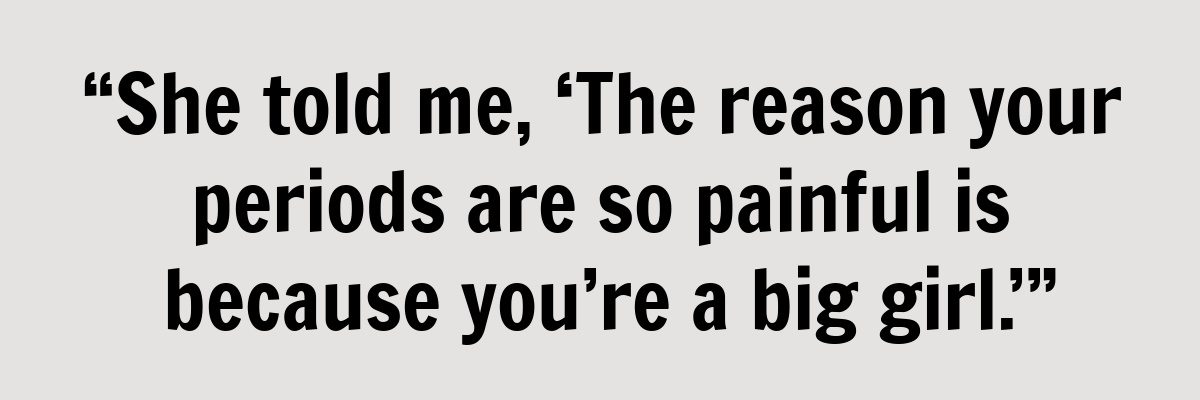
At age 42, fed up with the pain, she found the courage to visit her GP. Her doctor blamed Laurent’s weight. “She told me, ‘The reason your periods are so painful is because you’re a big girl,’” Laurent says. There’s science behind the diagnosis: obesity, according to one Australian study, is associated with more painful periods because a greater percentage of body fat may contribute to higher levels of estrogen.
The doctor attributed the heavy bleeding to perimenopause, a normal phase of hormonal fluctuations that begins a few years before menstruation stops completely. The doctor sent her on her way with prescriptions for iron supplements and the prescription painkiller naproxen. She also suggested Laurent should consider gastric bypass surgery.
Laurent left feeling defeated. Desperate for relief, she dieted and exercised over the next year, losing about 45 kilograms. “I thought, I’ll show her,” she says.
But the nightmarish periods didn’t abate—in fact, by the end of 2019, they were worse. The doctor was shocked at her dramatic weight loss, but other than switching her to a slightly more effective iron supplement, she didn’t propose further diagnostic tests for Laurent’s menstrual pain and bleeding. Then the pandemic hit, and Laurent avoided her doctor entirely, resigned to suffer in silence. She felt constant fatigue and could barely make it through a workday. “As soon as I logged out of remote work, I’d go straight to bed,” she says.
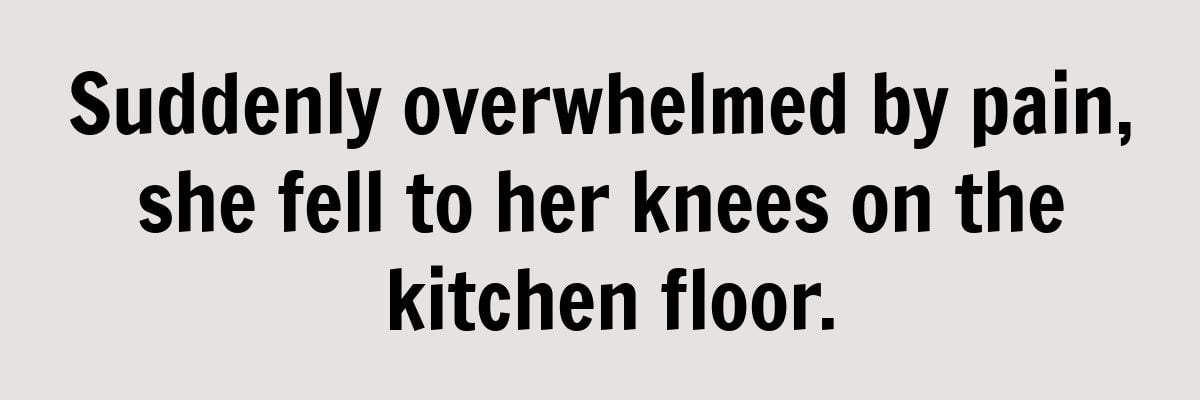
One night in February 2021, Laurent was cooking dinner at home, where she lived with her parents. Suddenly overwhelmed by pain, she fell to her knees on the kitchen floor. Her parents called 911 and an ambulance took her to the emergency room at Mackenzie Health, in Richmond Hill, Ontario. Blood tests showed that she was severely anemic, and an ultrasound scan showed several large masses around her uterus, along with ovarian cysts the attending physicians would later suspect were infected.
Laurent was admitted for five days, receiving a blood transfusion and antibiotics. A few weeks later, she was referred to Dr. Andrea Simpson, a gynecologic surgeon at Toronto’s St. Michael’s Hospital, for surgical investigation. During surgery, Simpson found evidence of endometriosis, a painful disorder where tissue similar to the uterine lining grows outside the uterus. She inserted an intrauterine device (IUD) containing hormones that would lighten Laurent’s periods, and biopsied several fibroids and the uterine lining to check for malignancy.
Laurent was sent home to recover and waited several weeks for Simpson to call with the results from the pathology report. Simpson had already run a cancer antigen screening blood test to check for the presence of a protein called CA 125, and when Laurent’s results came back high, she explained that it wasn’t abnormal to see this type of reading in someone with endometriosis. But when Simpson called with the results of the biopsy, it was positive for endometrial cancer, which is cancer of the uterine lining. Laurent went numb. “I don’t think I heard anything after the word ‘cancer,’” Laurent says. “It was as if my ears shut down, as did my brain.” She wept quietly as her mother sat beside her on the couch, rubbing her shoulders.
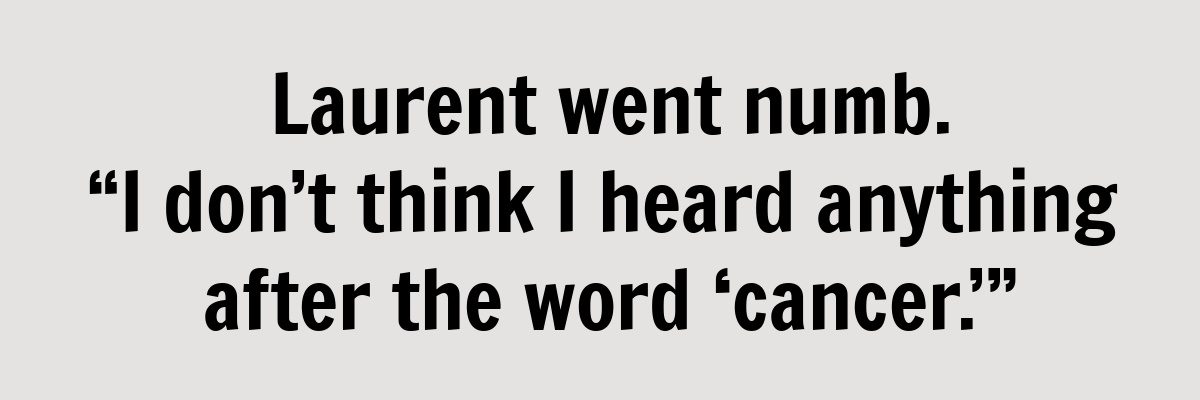
Simpson recommended a total hysterectomy. In September 2021, Laurent returned to the operating room to have her uterus, cervix, fallopian tubes and ovaries removed, as well as to repair an abdominal hernia.
Luckily, since the surgery was a success and her cancer was caught in the early stages, Laurent didn’t require chemotherapy or radiation. Endometrial cancer has a generally favourable survival rate, with 83 per cent of patients living beyond five years. Laurent, now 48 years old, is currently in remission. She’s back at work and has taken great strides toward a full recovery from her years-long ordeal. Despite fatigue from her lingering anemia, she regularly walks some 10,000 steps a day and has taken up cycling, swimming and weight training.
Simpson says Laurent’s cancer could have been diagnosed much sooner if her family doctor had ordered an endometrial biopsy. It’s a minimally invasive procedure that can be performed in-office by a gynecologist. “An endometrial biopsy is the gold standard for diagnosing endometrial cancer in anyone with abnormal bleeding of the uterus,” Simpson says. “It’s recommended for any bleeding after menopause and heavy bleeding over the age of 40, as well as for patients under 40 with risk factors—and obesity is a major one.”
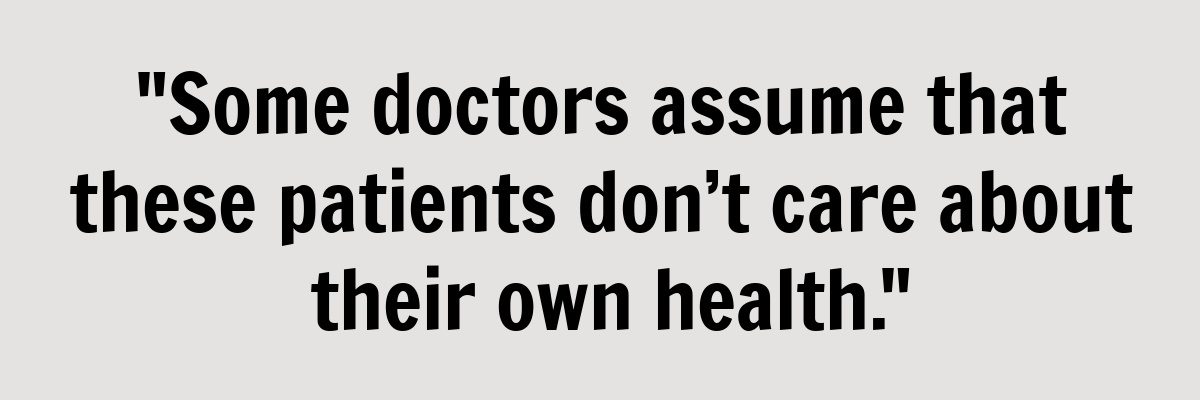
Unfortunately, says Simpson, it’s common for overweight patients to receive substandard health care. “Weight is one of the last socially acceptable stigmas in society,” she says. “Some doctors assume that these patients don’t care about their own health, leading them to internalize these experiences and avoid health care altogether.”
“These were the first health care providers to really treat me like a human being,” says Laurent.
Next, read the story of another woman whose period pain was dismissed by doctors—until an ultrasound revealed something strange…
There’s nothing better than getting a good, old-fashioned card in the mail, but when it comes to replying, figuring out what to write in a Christmas card can be tough—especially when the printed card already conveys the season’s greetings so well.
Just remember, you don’t have to write a novel! Whoever gets your holiday greeting will be so excited you thought of them, a simple message wishing them well will make them smile.
When figuring out the perfect Christmas card message, think about the person you’re writing to and try to personalize it, to let them know they’re getting something straight from you and not as part of an obligatory mass mailing list. Would they appreciate some holiday-themed humour, or something a bit more heartfelt? Pick out a Christmas card and then decide which Christmas card message from the list below best fits, and you’re almost done!

What to Write in a Christmas Card
Heartfelt Christmas card messages
- Feeling incredibly blessed to have you in my life this holiday season. Wishing all the best for you and yours.
- So lucky to be spending another Christmas with you.
- Holidays like Christmas remind me what I’m grateful for: you.
- The holidays are extra magical this year because I get to spend them with you.
- I know this last year has been tough, but I hope this holiday season brings you joy, happiness, and I’m wishing you all the best in the New Year. You deserve it!
- Having you in my life is the best Christmas present I could ever ask for.
- May your holidays be filled with as much joy and laughter as you’ve given me.
- You light up my life like a Christmas tree. So lucky to have you in my life!
Funny Christmas card messages
- Because I definitely won’t be organized enough to get even more cards out in the New Year: Happy holidays. (That covers all the ones from now until Easter.)
- The true gift of Christmas is the time we spend together. (That’s why I didn’t get you anything else.)
- Here’s hoping you survive the holiday season with your sanity and bank account intact. Merry Christmas.
- Since I’m pretty sure you’re not getting anything from Santa this year, I thought I’d send you this so you’d have something to open.
- Just to show I care I went to a real post office and bought actual stamps to send you something old fashioned: real mail.
- Marjorie Holmes once said, “At Christmas, all roads lead home.” I wonder how much mom paid her to say that.
- Eat, drink, and be merry―in moderation. Happy holidays!
- At this time of year, we so often are reminded of what’s truly important: mom’s cooking.
Check out more holiday jokes to consider adding to your card.
What to write in a Christmas card for your coworkers
- Enjoy some well-deserved time off―looking forward to working with you more in the New Year!
- Thank you for all you’ve done this year. Enjoy your holiday season!
- Wishing all the best to you and your family this holiday season. See you in the New Year.
- Thanks for the great year! Hoping you have a great holiday season.
- See you at the Christmas party for HR-approved merriness!
- Thank you for all your hard work this year!
- You’ve done such a great job this year. Enjoy your holiday!
- Have a great break.
Christmas Card quotes
- “Christmas waves a magic wand over this world, and behold, everything is softer and more beautiful.” ―Norman Vincent Peale
- “My idea of Christmas, whether old-fashioned or modern, is very simple: loving others.” —Bob Hope
- “We are better throughout the year for having, in spirit, become a child again at Christmastime.” ―Laura Ingalls Wilder
- “Christmas is a season not only of rejoicing, but of reflection.” ―Winston Churchill
- “Christmas gives us the opportunity to pause and reflect on the important things around us.” ―David Cameron
- “I wish we could put up some of the Christmas spirit in jars and open a jar of it every month.” ―Harlan Miller
- “Christmas is not as much about opening our presents as opening our hearts.” ―Janice Maeditere
- “A lovely thing about Christmas is that it’s compulsory, like a thunderstorm, and we all go through it together.” —Garrison Keillor
These short inspirational quotes might also be appropriate.
General Christmas card messages
- Merry Christmas! Wishing you health and happiness this holiday season and a wonderful New Year.
- May your holidays be filled with warmth and laughter.
- From our family to yours, wishing you a truly Merry Christmas.
- Happy holidays! Wishing you joy and laughter this Christmas, and all through the New Year.
- Hoping all your Christmas wishes come true.
- It’s people like you who make this season so magical. Happy holidays!
- May you have joy, laughter, and the makings of wonderful memories this holiday season.
- Merry Christmas and a Happy New Year!
Next, kick off your holiday countdown with one of these unique advent calendars.
Any mechanic will tell you that it’s time to change your brake pads when the lining is in the 3 mm to 4 mm range.
For context, know that the standard thickness of new brake linings is 12 mm. The first half of your brake pad’s lifespan is usually carefree. As it wears past 6 mm, though, listen for the sign that it’s time. Brake pads incorporate a metal burr that contacts the rotor at 3 mm, causing a squeal that signals you to service the brakes.
Don’t ignore this squeal. Ignoring this warning results in damage to the rotors, at first scoring, then overheating, and potentially even warping them as the pads wear to nothing. Ideally, you’ll catch them before you hear that telltale squeal, so you can save your rotors and budget accordingly. (Here are more strange car noises, decoded.)
How to monitor brake pads
Overall, it’s a good idea to check the brake pad lining thickness every time you change the oil. Most shops that do brakes will automatically check them for you when you change your oil, as they look to sell additional services. Once down in the 3 mm to 4 mm range, that squeal isn’t far away. Go ahead and schedule some time to get them replaced.
One real-life example: The ceramic brake pad linings on my SUV were measured after 11 months of use (at approximately 37,000 kilometres/year) and showed 7 mm remaining. Although this is still considered within the “good” range (first 6 mm of wear), I’ll keep a closer eye on these pads going forward as they progress through the last half of their useful lifespan.
How long does it take to wear out brake pads?
It depends upon a couple of things: Your driving habits and the material your brake pad lining is made from.
Speeding, last-second braking and kilometres driven either around town or in stop-and-go traffic (verses highway miles) all affect how fast your brake pads wear out. Furthermore, driving in mountainous country, where constant downhill braking is necessary, also adds wear to your poor, old brake pads.
Softer brake-lining materials, such as organics, tend to wear down faster, requiring replacement more often. Metallics tend to wear on the rotors more heavily. Ceramics combine the best aspects of the two, but cost more. Consider that good information that doesn’t help you once your pads are worn, but can help inform your brake pad replacement choice. (Here’s the best maintenance schedule to follow for good car health.)
Glazed brake pads are unsafe
Damaged through overheating, glazed brake pads provide little friction for stopping the brake rotors and have become dangerous. This can happen if you fast-brake in an emergency or ride the brakes for an extended period of time. They’ll have a smooth-feeling surface that can be shiny or crystallized in appearance. You may also notice that the vehicle’s stopping distance has increased—often significantly. No matter their thickness, if your brake pads are glazed, get them changed ASAP.
Next, find out when you should (and shouldn’t) be using your emergency brake.
During the winter, water can freeze around the door’s weather stripping, effectively locking you out of your car. If you use force to pull the door and break the ice, the weather striping can tear right off the door.
Here’s how to repair the damaged weather stripping:
- Buy a tube of weather-stripping adhesive, a can of nonflammable spray brake cleaner and a can of spray silicone (all are available at any auto parts store).
- Pull the weather stripping away from the door and clean it and the metal surface with the brake cleaner. Let that dry completely.
- Squeeze a bead of the adhesive onto the weather stripping and the door. Let that dry.
- Apply a second coat to both surfaces and press the weather strip into place. Clean up any adhesive messes with the brake cleaner.
- Hold it in place with masking tape until the adhesive dries (about 45 minutes). Pull the tape free.
…And to prevent it from happening again, take this extra step:
- Spray silicone on the weather strip on the other doors and trunk lid, which will add another layer of protection against ice.
It’s good preventive maintenance to treat all the weather stripping before winter every year.
Here’s more advice on how to get your car ready for winter.

My grandpa sold magazines, and beginning when I was four, my parents left them out for me to discover. I learned to sound out words from Reader’s Digest. A sense of humour was a big deal in my household growing up, so my favourite sections were Laughter, the Best Medicine and Life’s Like That. Now I’m in my early seventies and the real-life stories are still very inspiring for me. Because all those people shared their stories over the years with your readers, it led me to realize that every day is an adventure. I didn’t climb mountains or bungee jump, but the many experiences my husband and two sons had were difficult and scary enough to prompt me to write my life story this year. Thank you to Reader’s Digest for raising me and pointing me in a positive direction. — Jean Morby
In 1992, during my first year of college, I was overwhelmed and called my grandma to tell her how I missed being able to read what I wanted to for enjoyment. A few weeks later I received a brown envelope in the mail with a copy of Reader’s Digest and a five-dollar bill. There was a note included that said, “Take a break, grab a tea and enjoy the jokes, quips and stories. You got this, my girl.” She gifted me a year’s subscription that Christmas, too. She passed away last year and every time I see the magazine at the library or in a bookstore, I remember her and the gift of time she gave me. — Miranda O’Krane

When I got married in 1956, I moved from Quebec City to North Bay, Ontario, with my new husband, an officer in the Royal Canadian Air Force. My mother paid for my first subscription, the French-language edition, because she was worried that I would forget how to speak the language. I’m now 91 years old. We have travelled across Canada from east to west and every year I faithfully renew my subscription. I switched to English for a few years, and even bought the Spanish version from a special bookstore when we were learning different languages. I carry this little book everywhere I go—it’s good company. — Suzanne Drolet
Growing up, my parents kept a stack of magazines on the corner of our kitchen counter and there was always a copy or two of Reader’s Digest nestled in there. I loved all the sections of the magazine. My favourite departments were the true survival stories and the vocabulary challenges. To this day, the term “musquirt” (the yellow liquid that shoots out of the container of mustard should you dare not shake it first) makes me laugh, and I’ve passed the term onto my three boys. I now have my own house with my own magazines. Some are stacked on the footrest and others, given the times, are stored on my iPad. Your magazine will always be in the pile. — Michelle MacDonald

I was nine years old in 1967, sitting in the lobby of the hospital while my dad was dying of cancer. I was instantly taken away from my sorrow while I read every issue of Reader’s Digest I found lying about. With all sincerity, I will be forever grateful for those Reader’s Digests, which gave me something else to focus on. — Rita Taylor
I started reading Reader’s Digest while in waiting rooms and sometimes was annoyed when I was called in the middle of a great story. The articles are the perfect length. The puzzles and word games keep my brain active, which is much needed as I’m now in my fifties. — Shawn Hammond
Reader’s Digest kicked off my successful career in business. At nine years old, I canvassed my neighbourhood selling subscriptions. I even had a rubber stamp made with my name and address to make things look more professional. Later, I went on to have a career in business and became a professor at Seneca College in the international business
department. — Jeff Gazen
Each night I read to my husband from Reader’s Digest. He is now in the late stages of Parkinson’s disease and has lost the ability to read and retain longer passages. This is a blow for a voracious reader who could read a few books in a week. Every night we open the issue and enjoy shared moments of reading, reflection and discussion. Sometimes I’ll read a short “Good News” story. Occasionally he requests a longer, real-life piece. At other times we just read the jokes. It gives us a calm evening in these difficult times. — Colleen Ireland

“The Triumph of Janis Babson,” published in the June 1963 issue of Reader’s Digest, made a lasting impression on me. It was about a young girl who had leukemia and wished to donate her eyes to the Eye Bank of Canada. My driver’s license reflects my own wish to pledge my eyes to science, as a direct result of Janis’s story. — Kathy Stoddart
Reader’s Digest was my father’s birthday gift to me each year. We were a middle-class family with a carefully planned budget, but we always had room for the magazine. When I became a high school teacher, I would bring an issue to my English literature class and share stories with the students. Over the years, I found the students catching on to the lighter side of life, incorporating these ideas, thoughts and humour in their writing. — Mala Thapar
My subscription to Reader’s Digest began in the 1970s and I’ve kept every issue since then. I even became a scuba diver after being inspired by articles that grew my curiosity and love of the ocean. — Charleen Hall
My mother Liza was a Holocaust survivor, and English was her fourth language, after Romanian, Yiddish and German. She lived in a displaced persons camp in Austria after the Second World War, where she often served as an interpreter between the American soldiers and the Austrian locals. She and my father came to Canada in 1948, and I was born in 1952. From a very early age, I remember seeing copies of Reader’s Digest around the house, which she read to improve her English. When I was assigned to do a project for school, she often helped me come up with ideas using the magazine. My mother is gone, but Reader’s Digest still arrives in my mailbox every month, and I think she’d be happy to know that. — Gilda Spitz

In the April 1977 issue of Reader’s Digest, I read the article, “How Will You Know Unless I Tell You,” about receiving kind words from people you wouldn’t expect and how much it means to the receiver. I kept and thought about it a lot. It inspired me to send my favourite uncle, Orval Wilson, a Father’s Day card that year, to thank him for all the things he had done for me over my life. He died shortly afterwards from brain cancer, but my aunt said it meant a lot to him to know how much I loved him. — Andrea Ireland
For my birthday, my father gifted me a lifetime subscription to Reader’s Digest. I am now 92 years old and I’ve never missed a delivery, from Montreal to Dartmouth. — Virginia Cameron
Reader’s Digest was the first magazine I can remember coming in the mail. As a young girl, I loved reading the quotes, the jokes and the funny stories. I am so, so glad that the magazine gets to celebrate 75 years. I hope it’s around for many more so my grandchildren can experience the joy of reading it, too. — Ruth Boudreau
I started reading Reader’s Digest as a teenager, as my mother was a lifetime subscriber. Once she finished an issue, I would devour it. The magazine has continually educated me, made me laugh and had me question things. There is nothing as satisfying as curling up on a couch or bed with it in hand. — Andrea Feese
Tina Turner sums up my thoughts with the title of her song, “The Best”—that’s precisely what Reader’s Digest is. — Laura Gendron-McDougall
Next, take a look back at one of the most popular Reader’s Digest stories of all time, “Treasure Hunt: The Mystery of Oak Island.”
If you’re always looking for ways to save time, money and effort in the kitchen, you might consider jumping on the TikTok bandwagon. Of all the social media apps that have popped up over the last couple of years, TikTok has emerged as the home of the hack, with TikTok users sharing everything from instant Rice Krispies treat recipes to tips on how to peel garlic in 20 seconds flat.
Now, we’re sprucing up our kitchen—and kitchenware—with TikTok’s latest viral discovery. If you have a pan or stockpot so burnt it seems beyond saving, don’t toss it out. Grab your nearest dishwasher tablet, and get to work making your pans look brand-spankin’-new.
How to Clean a Burnt Pot… With a Dishwasher Tablet
If your favourite pot seems to be on its charred last legs, you’ll want to give this hack a try. @AdrianaSpink posted this experimental trick on TikTok, and it worked so well, people couldn’t help but give it a whirl themselves. All you need to do is put some water and a dishwasher tablet into the pot, then bring the whole concoction to a boil.
@adrianaspinkIt works!🤩 Ieri ho bruciato questo pentolino ma sono riuscita a non buttarlo grazie a questo ##hack! ##lifehacks ##kitchenhacks♬ Make Makeover (feat. Rachel Bloom) – Crazy Ex-Girlfriend Cast
What’s great about this clever cleaning hack is that it concentrates the dishwasher tablet’s full power on the pot instead of the rest of the dishes in the dishwasher. While Adriana doesn’t detail how long she boiled the tablet, our advice is to start at 10 minutes and boil for longer if you can’t get everything off the first time around.
Next, find out how dishwasher tablets can clean your oven, too.












